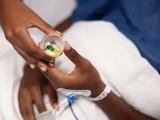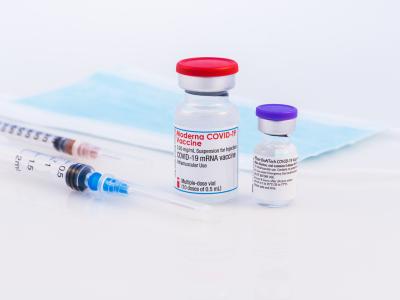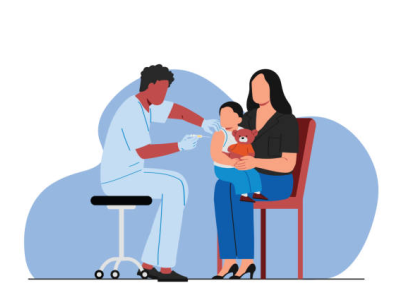The results of two phase 3 clinical trials reported this week in the New England Journal of Medicine indicate that omadacycline, a recently approved, modified tetracycline antibiotic, is as effective as standard antibiotics for treating community-acquired pneumonia and skin infections.
The two double-blind, randomized, noninferiority trials were conducted at sites in several countries and designed and supported by drug developer Paratek Pharmaceuticals of Boston, Mass. In one of the trials, omadacycline was found to be noninferior to moxifloxacin for the treatment of community-acquired bacterial pneumonia. In the other, omadacycline was found to be noninferior to linezolid for the treatment of acute bacterial skin and skin-structure infections, with a similar safety profile.
The US Food and Drug Administration approved omadacycline (marketed as Nuzyra) for the two conditions in October 2018, after reviewing the results of these two trials and previous clinical studies. The drug, which comes in intravenous (IV) and oral formulations, is a "modernized" tetracycline that's designed to overcome tetracycline resistance and has shown activity against both gram-positive and gram-negative bacteria, including antibiotic-resistant strains.
Community-acquired bacterial pneumonia is one of the most common infectious causes of illness and hospitalization, especially in the elderly, and incidence of bacterial skin and skin-structure infections has been rising. Paratek officials say increasing drug-resistance in the pathogens that cause these infections highlights the importance of the trial results.
"These pivotal clinical trials demonstrated that Nuzyra is an effective, well-tolerated monotherapy option for patients with activity across an appropriate spectrum of bacteria, including gram-positive, gram-negative, atypicals, and drug-resistant strains, and we believe Nuzyra can play an important role in winning the battle against the growing health challenge of antibiotic resistance," Paratek Pharmaceuticals president Evan Loh, MD, said in a company press release.
But some infectious disease physicians are questioning what the role of the new drug will be.
Trials demonstrate noninferiority
In the OPTIC (Omadacycline for Pneumonia Treatment in the Community) trial, researchers enrolled adult patients with community-acquired bacterial pneumonia at 86 sites in Europe, North America, South America, the Middle East, Africa, and Asia. Patients were randomly assigned, on a 1:1 basis, to receive IV omadacycline or IV moxifloxacin for 7 to 14 days, with a transition to oral versions of the two drugs allowed after 3 days.
The primary endpoint of the trial was early clinical response, defined as survival with improvement in at least two of four symptoms (cough, sputum production, pleuritic chest pain, and dyspnea) and no worsening of symptoms at 72 to 120 hours. Secondary endpoints included investigator-assessed clinical response at post-treatment evaluation 5 to 10 days after the last antibiotic dose. The noninferiority margin was 10 percentage points.
Of the 774 patients, 386 received omadacycline and 388 received moxifloxacin. The results showed that 81.1% of patients in the omadacycline arm had an early clinical response, compared with 82.7% of patients in the moxifloxacin arm (difference, –1.6; 95% confidence interval [CI], –7.1 to 3.8), demonstrating noninferiority. The rates of investigator-assessed clinical response at 5 to 10 days post-treatment were 87.6% for omadacycline and 85.1% for moxifloxacin (difference, 2.5 percentage points; 95% CI, –2.4 to 7.4).
Evaluation of safety found that adverse events emerged after treatment in 41.1% of the omadacycline patients and 48.5% of the moxifloxacin patients. The most frequent were gastrointestinal (10.2% in the omadacycline arm and 18.0% in the moxifloxacin arm), with the biggest difference observed in incidence of diarrhea (1% in the omadacycline group and 8% in the moxifloxacin group). Twelve deaths occurred during the trial, with 8 deaths occurring in the omadacycline arm and 4 in the moxifloxacin arm. The authors of the study note that they were not able to establish reasons for the difference in the mortality rate.
In OASIS-1 (the Omadacycline in Acute Skin and Skin-Structure Infections Study), researchers at 55 sites in Europe, the United States, Peru, and South Africa enrolled adults with a qualifying skin infection (including wound infections, cellulitis, or major abscesses) and randomly assigned them 1:1 to receive 7 to 14 days of IV omadacycline or IV linezolid, with the option to switch to oral versions of the drugs after 3 days. A total of 655 patients underwent randomization, with 627 included in the modified intention-to-treat population (316 in the omadacycline arm and 311 in the linezolid arm).
The primary endpoint was early clinical response at 48 to 72 hours, and the secondary endpoint was investigator-assessed clinical response 7 to 14 days after treatment ended. The noninferiority margin was 10 percentage points.
Again, omadacycline was found to be noninferior, with 84.8% of patients in the omadacycline group showing early clinical response, compared with 85.5% in the linezolid group (difference, –0.7 percentage points; 95% CI, –6.3 to 4.9). The results were similar for the secondary endpoint. The investigator-assessed clinical response post-treatment was 86.1% in omadacycline patients and 83.6% in those treated with linezolid (difference, 2.5 percentage points; 95% CI, –3.2 to 8.2). In addition, omadacycline was as effective as linezolid against both methicillin-susceptible and methicillin-resistant Staphylococcus aureus, a common cause of bacterial skin infections.
Adverse events were reported in 48.3% of the patients in the omadacycline group and 45.7% in the linezolid group. The most frequent adverse events were gastrointestinal (18% in the omadacycline arm and 15.8% in the linezolid arm), and most were mild.
Questions about clinical value
In an editorial that accompanies both studies, Henry Chambers, MD, an infectious disease specialist at Zuckerberg San Francisco General Hospital, writes that while both trials are high quality and clearly demonstrate that omadacycline has similar efficacy to the standard-of-care agents, the clinical value of the new drug is unclear.
"Omadacycline has few advantages over the numerous agents already available for treatment of acute bacterial skin and skin-structure infections," Chambers writes. "A similar analysis pertains to community-acquired bacterial pneumonia, for which there are several effective treatment options, although omadacycline may offer some advantages."
That sentiment is echoed by Andrew Morris, MD, medical director of the Sinai Health System-University Health Network Antimicrobial Stewardship Program and a professor of medicine at the University of Toronto. "We don't need new drugs for community-acquired pneumonia and skin and soft-tissue infections. There are a plethora of agents available," Morris told CIDRAP News. "Antimicrobial resistance is rarely an issue in these conditions, and omadacycline's characteristics add absolutely nothing to what is available, which includes doxycycline."
For Chambers, the big question is whether omadacycline will be effective against other types of infections caused by multidrug-resistant gram-negative pathogens, particularly those that are carbapenem resistant. That question remains unanswered.
While the drug is a promising candidate for treating infections caused by carbapenem-resistant Enterobacteriaceae and species of Acinetobacter, Chambers writes, well-designed clinical trials testing omadacycline against these and other multidrug-resistant gram-negative organisms "are needed to determine its real value as an antibacterial agent."
See also:
Feb 6 N Engl J Med OPTIC trial
Feb 6 N Engl J Med OASIS-1 trial
Feb 6 N Engl J Med editorial
Feb 6 Paratek Pharmaceuticals press release

























